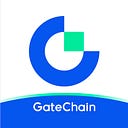Detailed explanation of Zk-rollup solution
Author : Easen, Gate Chain

As far as everyone knows, there exist many problems with Layer 1 blockchain networks (ETH for example) such as high gas fee, low Tps, network congestion etc. The discussions on solving these problems are constantly ongoing. Rollup and sharding technology have grown to become an important expansion method to improve the throughput and scalability of L1 networks. The Zk-rollup to be explained today is also a kind of Rollup technology. Let us get more in depth into it below.
What is Zk-rollup
Zk-rollup belongs to Rollup, which is an expansion method of Layer 2. Rollup, as a layer-2 network expansion method and is also the most respected and widely used expansion technology path currently. Rollups can be divided into Optimistic-Rollup and Zk-rollup. The former refers to Plasma’s fraud proof mechanism, and the latter uses zero-knowledge proof mechanism to ensure security.
Rollup is to “aggregate” a large number of transactions into a large batch, generate a “proof” for the batch, and then publish this proof on the mainnet. Rollup executes transactions outside of Layer1, but publishes transaction data on Layer1. Since the transaction data is included in the Layer1 block, Rollup is equivalent to inheriting the security of the Layer 1 network. Below we will learn more about what Zk-rollups are.
Zk-rollup is an off-chain protocol that runs on top of the Layer 1 blockchain and is governed by on-chain smart contracts. ZK-rollup is a proof-of-validity-based mechanism, and its core architecture consists of the following components:
- On-chain contracts: As mentioned earlier, the ZK-rollup protocol is controlled by smart contracts running on the Layer 1 blockchain. This includes a master contract that stores aggregated blocks, tracks deposits, and monitors status updates. Another on-chain contract (the validator contract) verifies the zero-knowledge proofs submitted by the block producers. Therefore, the Layer 1 network acts as the base layer of ZK-rollup.
- Off-chain Virtual Machine (VM): While the ZK-rollup protocol exists on the Layer 1 network, transaction execution and state storage occur on a separate virtual machine independent of the EVM. This off-chain virtual machine is the execution environment for transactions on ZK-rollup and acts as the second layer of the ZK-rollup protocol.
What problem does Zk-rollup solve
Rollups provide a self-contained execution environment with high TPS, low gas and the ability to access all assets from the Layer1 network, which helps applications on the blockchain expand from DeFi to more general areas such as gamefi and socialfi. We expect that rollups will gradually become a service provided to Web3 applications, namely Rollup as a Service (RaaS).
Zk-rollup (zero-knowledge proof) compresses and packages off-chain data by creating a proof and publishes it to the main network as a form of validity proof, which greatly improves the efficiency and scalability of blockchain network execution. But objectively speaking, this will also have a certain impact on network security and EVM compatibility.
Comparison of Zk-rollup and Optimistic-Rollup
There are a lot of discussions about Zk-rollup and Optimistic-Rollup. Zk-rollup is based on validity proof to verify some validity data, while Optimistic-Rollup is based on fraud proofs, verified by the theory of “no guilt is innocence”.
At present, the mainstream Zk-rollup projects in the market include zkSync, StarkEX, StarkNet, Aztec, etc., and the mainstream Optimistic-Rollup projects include Optimism, Arbitrum, etc. Optimistic Rollup now has a first-mover advantage. The tokens of Optimism have been circulated and traded on major mainstream exchanges. Arbitrum’s TVL also occupies the first place in the Rollup ecosystem, but the Zk-rollup projects have not issued any tokens yet.
The following is a comparison of the specific parameters of Zk-rollup and Optimistic-Rollup. There are several key differences:
- Security, Zk Rollup is better than Optimistic Rollup;
- Scalability, Zk Rollup is better than Optimistic Rollup;
- Verifiable finality, Zk Rollup is better than Optimistic Rollup;
- EVM compatibility, Optimistic Rollup is better than Zk Rollup;
In general, although Optimistic-Rollup currently occupies the first-mover advantage, it does have certain drawbacks in terms of safety and efficiency, which will limit its long-term development in the later stage. With the continuous improvement of Zk-rollup technology, the future market will definitely belong to the Zk-rollup ecosystem, and our Gate Chain will also participate in the construction of the Zk-rollup ecosystem.
Gate Chain’s Zk-rollup solution
As a high-performance security public chain, Gate Chain has been committed to protecting the security of user assets and improving the performance of the blockchain network. At present, the Zk-rollup solution developed by Gate Chain will also be launched. As a self-developed Layer 2 expansion solution, we refer to the advantages and disadvantages of the mainstream Zk-rollup projects on the market, and actively innovate to improve EVM compatibility without sacrificing security and efficiency. Specific plans will be announced in the future, so stay tuned.
About Gatechain
GateChain is a new generation of public chains focused on user asset security and decentralized transactions. With its original online hot wallet account and settlement guarantee system, it creatively solves the core basic problems of the industry, such as the theft of users’ digital assets, the destruction and loss of private keys, slow decentralized transactions, and the lack of cross-chain transfers. With six years of blockchain technology accumulation, two years of dedicated research and a hundred-people in the technical team,GateChain relies on excellent innovation ability and strong financial strength to create a revolutionary blockchain.
- Official website: https://gatechain.io/
- Twitter: https://twitter.com/gatechain_io
- Medium: https://gatechain.medium.com/
- Discord: https://discord.com/invite/TADecrzfcP
- Telegram: https://t.me/gatechain
